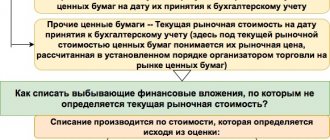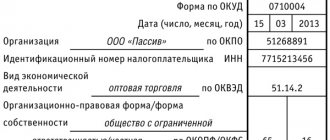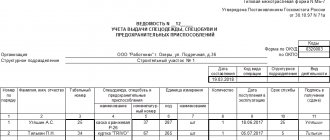Flushing and neutralizing agents for workers - list
Washing, protecting and regenerating products that should be provided to employees include:
- soaps and detergents for face and body;
- cleansing gels and pastes;
- substances that absorb moisture and moisturize the skin;
- substances that repel moisture;
Flushing and protective agents
- combination agents;
- gels and creams against irritations due to environmental conditions;
- disinfectant solutions and gels;
- means protecting against insect bites;
- regenerating restorative creams and emulsions for workers.
Each tool is issued for specific types of work. It is legally required that work without them is not permitted, as the worker’s health may be at risk.
Issuance of flushing and neutralizing agents by profession - standard
Standard standards for issuing personal protective equipment
In accordance with established standards, funds must be issued for certain categories of employees. This is how protection is used when working with various hazardous substances. Moisture-absorbing creams and gels protect workers when working with insoluble substances, such as varnishes, lubricants when working on cars, petroleum products, etc. Hydrophobic agents, on the contrary, are used to protect against water-based substances: they are issued when working with acids and alkalis and salts.
Attention! If it is difficult to determine exactly which specific substance will have to be worked with, combined mixtures are used.
Anti-irritation substances are useful for welding work, activities under increased ultraviolet radiation and when exposed to temperature and wind.
Work with possible bacteriological contamination should not be carried out without disinfectants, which should be applied to all exposed areas of skin or clothing. They will disinfect, protect and maintain the health of the worker.
During seasonal work, protection from blood-sucking insects or the bites of poisonous arthropods is especially important. In this case, protective substances of a biological nature must be provided.
Soap and detergents are useful for work with possible contamination. Moreover, these substances are also divided into several levels, depending on the difficulties that arise during rinsing.
Restorative creams and gels can be useful in all of the above cases, if, despite increased attention to protection, it was not possible to avoid the negative impact of the environment on humans.
Professions and DSPE standards
Rinsing and similar substances applied to the skin (dermatological) are classified by the occupational safety service as personal protective equipment for workers - PPE. Order No. 1122n contains a list of personal protective equipment by category, indicating fixed issuance rates calculated per month of consumption.
Protective in nature
Moisturizing skin - for persons in contact with oils, greases, soot, solvents, petroleum products, industrial dust and similar media that are not soluble in water (100 ml).
https://www.youtube.com/watch?v=https:tv.youtube.com
Water-repellent, drying the skin to a natural state, for persons in contact with water, soap-water solutions, cement solutions containing salt, acid, alkali, etc.; working in gloves without lining, made of ordinary rubber (100 ml).
Combining the above characteristics, combined. If you have to work with substances that change the condition of the skin, then dry the skin or moisturize it (100 ml).
Prevents irritation and damage to the skin - when welding, working in windy, cold conditions (100 ml).
Disinfectants - in case of contact with substances containing dangerous bacteria or that may contain them, the absence of sanitary and hygienic premises at the place of work or in the vicinity of it, if the work requires highly sterile hands. This also includes working in safety shoes (200 ml).
When working with contaminants that are easily washed off, the standard for hand washing will be 200 g of toilet soap (250 ml - liquid, in a container with a dispenser), for the body, respectively, 300 g and 500 ml.
When working with contaminants that are difficult to wash off, namely oils, greases, petroleum products, paint and varnish industry, industrial dust and other persistent contaminants - 300 g of toilet soap (500 ml in a container with a liquid dispenser).
Mine work, in the field of mine construction and installation, in the production industry - 800 g and 750 ml, respectively.
Creams, emulsions - when working with solvents and other aggressive, skin-corroding environments, work with which is carried out in thin, unlined gloves. – 100 ml.
On a note. There is no concept of “easily washable pollution” in legislative acts. There is a document of the Ministry of Labor (letter) No. 15-2/B-2039 dated June 23, 2020. It includes hair and skin contaminants received at work as easily washable if they can be easily removed with soap or liquid soap.
Based on the above standards, departments develop their own documents, which include lists of professions and standards for issuing personal protective equipment for each profession. Thus, JSC Russian Railways applies “Recommendations for the use of cleaning agents and disinfectants...”. The document contains a structured list of personal protective equipment for Russian Railways and a list of professions, for each of which it is indicated which personal protective equipment is required for skin protection, cleaning, regeneration and whether it is required.
We invite you to familiarize yourself with the Sample Certificate of Refusal to Familiarize yourself with the Order
Since there is no single list of professions, you can use this document as a guideline, and specific indicators for professions established in the company can be reflected in local documentation.
On a note. The organization is not obliged to issue soap in the office to employees and formalize this procedure (see Letter No. 15-2/OOG-1752 dated May 6, 2020, Ministry of Labor).
They operate on the basis of Appendix No. 1 to the order of the Ministry of Health and Social Development of the Russian Federation dated December 17, 2010 No. 1122n.
| No. | Type of activity, profession | Type of DSPE | Issue rate per 1 person |
| 1 | Professions that use components that have a negative effect on the skin:
| Moisturizers and moisture-absorbing products | 100 ml |
| 2 | Works where it is necessary to interact with water and/or aqueous solutions:
Professions where it is necessary to operate in rubber or polymer gloves, as well as closed special shoes. | Skin-drying and moisture-repellent products | 100 ml |
| 3 | Works of alternating exposure to water-soluble and insoluble pollutants | Hydrophilic-hydrophobic agents (combined) | 100 ml |
| 4 | Professions where you have to work with bacterially hazardous substances (environments). Work carried out away from stationary sanitary facilities. Professions where hand sterility is required. | Disinfectants | 100 ml |
| 5 | Seasonal work outdoors in the warm season | Repellents | 200 ml |
| 6 | Work during which a person receives easily washable contaminants (which can be removed with water and soap) | Solid or liquid soap, for item 7 – cleansing gels, pastes, creams | 200 g solid or 250 ml liquid hand soap, 300 g solid soap or 500 ml liquid body soap |
| 7 | Work associated with difficult to wash off, persistent stains (see clause 1) | 300 g of solid or 500 ml of liquid soap, 200 ml of paste (cream, gel) | |
| 8 | Coal industry works | 800 ml solid or 750 ml liquid soap | |
| 9 | Work during which the skin is exposed to aggressive influences (see clause 1, clause 2, clause 4) | Regenerating emulsions, regenerating agents | 100 ml |
We invite you to familiarize yourself with Divorce with young children: deadlines and procedure for registration
The procedure for issuing flushing and neutralizing agents to employees
Standards for issuing workwear by profession
Regulatory acts strictly regulate the procedure for issuing flushing and neutralizing agents. They establish that procurement and issuance should be handled by the management of the enterprise. All funds are issued to workers in accordance with standard standards established by law. Issue is carried out if there is a need to carry out special work specified in regulatory documents.
Important! Enterprise managers have the right to change the procedure for issuing flushing and neutralizing agents, but only in the direction of increasing the level of employee protection. If a decision was made to increase the standards, no problems with documents will arise after that. But no one is allowed to lower the standards.
All funds are purchased for a period of one reporting period (month). If at the end of the month there are any protective equipment left, they are allowed to be used in the next month, provided that the expiration dates are observed.
It is worth noting that all funds issued to employees must have official confirmation of compliance with certain standards. It is strictly prohibited to issue uncertified products. Occupational safety and health inspection organizations even request a certificate for toilet soap.
Issuance procedure
Approval of a complete list of selected flushing and protective agents is carried out after a detailed special assessment of working conditions.
We provide soap and its analogues to the employee
If work in production is associated with pollution, is carried out in harmful (dangerous) working conditions or at unfavorable temperatures, the employee is provided with flushing and neutralizing agents for protection <*>.
Providing flushing agents. To whom and how much
Washing and neutralizing agents are soap (washing agents similar in action, such as liquid detergents) and dermatological products. The latter, based on their properties, can be divided into cleansing, protecting, restoring <*>.
What kind of funds to issue is determined by the employer, based on the employee’s working conditions and taking into account the position of the territorial state sanitary inspection body, which is clarified by seeking advice <*>.
The legislation establishes the obligation to purchase and provide free flushing and neutralizing agents to employees who perform work related to:
— with harmful and (or) dangerous production factors;
— pollution;
- unfavorable temperatures.
The presence of such conditions is identified during workplace certification.
Having determined who is entitled to flushing and neutralizing agents, they draw up a list of professions and positions of workers who should be provided with these means <*>. Its form is not defined by law. The organization develops it independently.
For example, in such a list you can indicate:
— profession (position) of the employee;
— the structural unit in which he works;
— type of work performed (for example, working with paints and varnishes);
— type of product dispensed (for example, hydrophilic skin protection cream);
— norms of distribution per employee per month.
The legislation establishes minimum standards for the issuance of flushing and neutralizing agents. Thus, the employee is entitled <*>:
- at least 400 g of soap (its analogues) per month;
- at least 5 g of dermatological products for one-time application to the skin.
Note! Standards for dermatological products are set in grams. Manufacturers of such products (including gels, creams) often indicate the volume in milliliters. To comply with the standards, you need to correctly correlate these units of measurement.
The norms for issuing flushing and neutralizing agents for an organization are set by the employer, based on the nature and types of work performed, the organization of work, and the specifics of the technological process. When determining the required amount of dermatological products, the requirements for their use (frequency of use) are also taken into account.
Note: All costs for flushing and neutralizing agents issued according to the prescribed standards are included in the cost of production <*>.
The list of professions and positions of employees entitled to free provision of funds must be approved by the employer in agreement with the trade union (if any) <*>:
- either by signing and dating the approval stamp on the list itself;
- or by signing the corresponding order.
These methods have the same legal force. However, if additional instructions are required, it is advisable to issue an order.
| Example wording In accordance with sub. 1.4 clause 1 of the resolution of the Ministry of Labor and Social Protection of the Republic of Belarus dated December 30, 2008 N 208 “On the standards and procedure for providing workers with flushing and neutralizing agents” I ORDER: 1. Approve and put into effect a list of professions and positions of employees of the limited liability company "MebelGrad" who have the right to free provision of flushing and disinfecting agents. 2. Assign labor protection specialist E.P. Filimonova to be responsible for the purchase of flushing and neutralizing agents. |
Dispensing detergents. What is the procedure for registration
Providing workers with flushing and disinfecting products does not always mean giving these products directly to them. If the organization has sanitary facilities where such funds are freely available at all times, there is no need to hand out funds. If such premises are not available, the funds are provided directly to the employee, while providing space for their storage <*>.
Note: The employer should appoint a person responsible for issuing flushing and neutralizing agents to the employee. This can be done either by a separate order or by an administrative document that approves the list discussed above.
For the purpose of accounting and control of flushing (neutralizing) agents handed out, you can issue personal cards for recording their issuance. The form of such a card is not established by law, so you need to develop your own. In particular, you can indicate on the card:
— Full name, profession (position) of the employee and name of the structural unit in which he works;
— type and quantity of flushing and (or) neutralizing agents to be issued;
- the name of the flushing (neutralizing) agents, the date and quantity of their issue - on the back of the card.
It is advisable for the employee to confirm the fact of receipt with a signature.
Note: A personal record card for the issuance of flushing (neutralizing) agents can be kept both in paper and electronic form. In the latter case, employees may sign on a different document. For example, in the list of distribution of flushing (neutralizing) agents.
Sometimes in practice, employees are forced to purchase funds at their own expense. In such situations, the employer is obliged to compensate the cost of such funds within the established norms <*>.
Order for issuing detergents: sample
Sample order for standards for issuing workwear
Each employer must keep records of the distribution of flushing and protective equipment. Such accounting is carried out using personal cards of workers. They indicate the employee’s name, position, as well as a list of items issued. In most cases, such cards are quite enough. There is no need to draw up a special order for extradition.
However, if necessary, such an order can be drawn up. It indicates the list of employees to whom the issuance is carried out, as well as all funds. The order is signed by the manager or responsible person. The employees themselves do not have to sign for it.
Sample order for extradition
How to familiarize employees with soap dispensing standards
All employees of the enterprise must be promptly notified of the organization’s standards for issuing soap and other protective or flushing agents. This can be done in several ways. The simplest thing is to include the relevant clauses in the employment contract.
If you were not familiarized with the standards when you were hired, this must be done as soon as possible by mail or in person. The main condition is the ability to confirm that the employee has been familiarized with the standards. Therefore, his signature must be affixed to all relevant documents.
When issuing funds, all employees must be familiarized with the rules for their use.
Flushing and neutralizing agents in an employment contract
In order to comply with all established labor safety standards, it is advisable for the employer to include information about the standards for issuing flushing agents already at the stage of developing the employment contract.
In this case, a simple reference to the organization's normative act may not be enough. It is necessary to familiarize the employee with a specific list of everything that will be provided to him to ensure normal working conditions. This is especially true for activities associated with increased pollution and health risks.
Important! It is in the interests of the enterprise to prescribe the standards for issuing hygiene products in the employment contract - already at the stage of familiarization with the vacancy, the employee will see that they are worried about him.
How to determine what funds are needed and their quantity
Determining the required type and quantity of rinsing agents
Each enterprise has its own procedures for issuing products for washing away impurities and regenerating the skin, but if you have doubts about the organization of this area, you can use a simple but effective algorithm:
- To begin with, it is worth carefully studying the legislative framework, and then the existing regulatory documents adopted at the Federal level. This is entrusted to the labor protection department at the enterprise.
- Ideally, for each workplace in organizations, a special assessment of working conditions should be carried out, that is, certification cards should be issued. The documents must indicate how much flushable products are provided to workers and for what period. This is determined by the experts involved in the matter.
Further, there are two options for issuing funds:
- as a result of a special assessment;
- established standards.
It turns out that if there are no certification cards, then it is necessary to be guided by standard standards.
So, now for each profession there is material on providing workers with means for washing and disinfecting the skin.
Documents on the basis of which flushing and neutralizing agents are issued
The issuance of flushing and neutralizing agents is carried out on the basis of several basic documents. The main order is considered to be the order of the Ministry of Health and Social Development 1122n. At the legislative level, it stipulates the employer’s obligations to ensure comfortable and safe activities for employees.
Regulations governing the provision of protection
At the organizational level, the defining document is the employee’s personal card. It is a special document that indicates basic information about the employee and where all issued substances are entered.
Briefly about the Order of the Ministry of Health and Social Development of December 17, 2010 N 1122n
Order 1122n includes all the main aspects to ensure safe work with various contaminants. It specifies all the substances that need to be given to employees and lists the types of work for which they will be needed.
The occupational safety standard specifies that workers must be provided with flushing agents. Who is responsible and how can this be regulated. There is also a list of actions that are prohibited:
- It is forbidden to use preparations with a high alkali content to wash off light stains;
- soap should not be replaced with powder or any abrasives;
- Do not use regular soap or gels to wash away stubborn stains.
Important! All employers without exception should follow this order. Changes can be made to the regulations that do not contradict the basic norms.
Standards for issuing personal protective equipment by profession
They operate on the basis of Appendix No. 1 to the order of the Ministry of Health and Social Development of the Russian Federation dated December 17, 2010 No. 1122n.
| No. | Type of activity, profession | Type of DSPE | Issue rate per 1 person |
| 1 | Professions that use components that have a negative effect on the skin:
| Moisturizers and moisture-absorbing products | 100 ml |
| 2 | Works where it is necessary to interact with water and/or aqueous solutions:
Professions where it is necessary to operate in rubber or polymer gloves, as well as closed special shoes. | Skin-drying and moisture-repellent products | 100 ml |
| 3 | Works of alternating exposure to water-soluble and insoluble pollutants | Hydrophilic-hydrophobic agents (combined) | 100 ml |
| 4 | Professions where you have to work with bacterially hazardous substances (environments). Work carried out away from stationary sanitary facilities. Professions where hand sterility is required. | Disinfectants | 100 ml |
| 5 | Seasonal work outdoors in the warm season | Repellents | 200 ml |
| 6 | Work during which a person receives easily washable contaminants (which can be removed with water and soap) | Solid or liquid soap, for item 7 – cleansing gels, pastes, creams | 200 g solid or 250 ml liquid hand soap, 300 g solid soap or 500 ml liquid body soap |
| 7 | Work associated with difficult to wash off, persistent stains (see clause 1) | 300 g of solid or 500 ml of liquid soap, 200 ml of paste (cream, gel) | |
| 8 | Coal industry works | 800 ml solid or 750 ml liquid soap | |
| 9 | Work during which the skin is exposed to aggressive influences (see clause 1, clause 2, clause 4) | Regenerating emulsions, regenerating agents | 100 ml |
Differences between old and new rules regarding PPE
In the latest edition, Order 1122 on the issuance and provision of protective equipment to workers has some fundamental changes compared to the previous version:
- Most funds must be entered into the employee’s personal card when issued. But now it is not necessary to record the dispensing of substances for easily washed off dirt on the card.
- Now, in addition to fixing the norms for the distribution of substances in the employment contract, the employee can be informed using a special act. Information must be provided in writing so that it can be confirmed.











